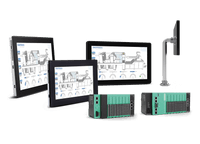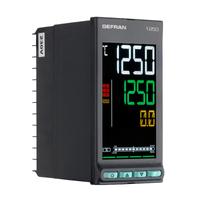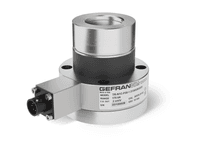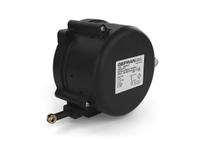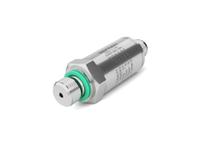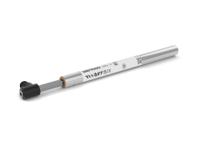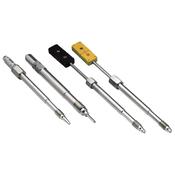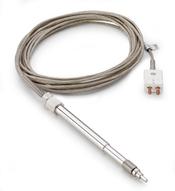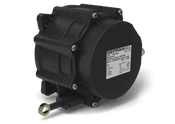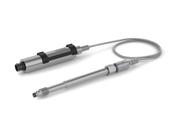The blown film extrusion line is an industrial solution for the continuous production of plastic films through an extrusion and blowing process. Unlike traditional extrusion, in this process the polymer is melted by one or multiple parallel extruders and pushed through a circular die, which generates a tube. This tube is then inflated with high pressure air, so it swells like a bubble and is stretched into film. This process is used to produce thin plastic sheets for packaging (such as bags of various sizes) or protective films.
Requirements:

Control of the extrusion process
Learn more
Temperature control
Learn more
Melt temperature and pressure measurement
Learn more
Haul-off tension
Learn more
Conveyor longitudinal and transverse opening
Learn more
Monitoring of the hydraulic circuit
Learn more
Enhancing Production Data
Learn more
Unloading the winders
Learn more
Operating Principle
The blown film extrusion process consists in several phases: melting and plasticisation of the polymer, extrusion through the die, air blowing to stretch the tube, so it forms a film, internal and external cooling, and winding of the final film.
The granular plastic material is introduced into the hopper and transferred into the extruder, where it is transported, heated and plasticised by the rotating screw until a homogeneous, molten material is obtained. The flow rate in this type of application is directly controlled by the amount of material loaded into the hopper. The melt is then pushed through a circular die, from which a tubular film of hot material emerges. The compressed air blown into the tube inflates and stretches the film, increasing the bubble diameter and reducing the thickness of the bubble wall. The film formed in this way is cooled by external and internal air streams to stabilise the shape and mechanical properties.
After the initial cooling, the bubble is collapsed by a system of guides and rollers that transform it from a tubular structure into a flat film. Only if destined to produce bags, the bubble is also folded inwards at the sides, to optimise bulk in the reel. The upper part of the line, consisting of the conveyor and the haul-off, is mounted on a structure that rotates continuously around the axis of the bubble. This rotation makes it possible to spread the film evenly on the rollers, minimising thickness variations and ensuring the even distribution of the material over the entire useful width.
The flat film passes through a first haull-off unit, consisting of opposing calender rolls that drag it upwards by exerting controlled traction. This step determines a first longitudinal orientation of the material, essential to ensure mechanical and geometric uniformity. Subsequently, the film descends through a series of descending rollers that regulate its flatness, thickness and tension, stabilising the product before collection.
Depending on the desired type of output, the film can be wrapped in a closed form to produce bags, or cut laterally and wrapped around two separate reels to produce flat films for other processes. In the latter case, the removed side portions, known as cutting scrap, are collected by an integrated suction extraction system and reinserted directly into the extrusion process or into a recovery circuit. This minimises waste, improving production efficiency and the overall sustainability of the line.
Requirements and Technology
The blown film extrusion process requires a more precise and coordinated control of multiple parameters than traditional extrusion, since the criticality of the process no longer resides solely in the extrusion recipe but in the coordination of the various motors to obtain the desired dimensions and thicknesses. The main requirements include:
- Melt temperature control: fundamental in the extrusion head and cooling rings, where fast and stable sensors are essential.
- Monitoring of molten polymer pressure: essential to prevent overloading, breakage or flow fluctuations.
- Monitoring of the hydraulic circuit: pressure is a safety parameter. Variations not consistent with the mechanical controls indicate potential anomalies or risks for the operator.
- Towing tension: this requires the precise detection of the tension exerted by the towing system during the closing and collection of the bubble after cooling.
Other requirements include:
- Precise positioning of the bubble guide, to maintain the correct trajectory of the film.
- The position of the winder unloaders.
- Data collection for diagnostics and predictive maintenance, essential to increase availability and production continuity.
Gefran offers a complete range of control platforms, melt pressure and temperature sensors and modular solutions, which can be easily integrated into any plant, to ensure efficiency, safety and constant quality in blow film extrusion lines.

